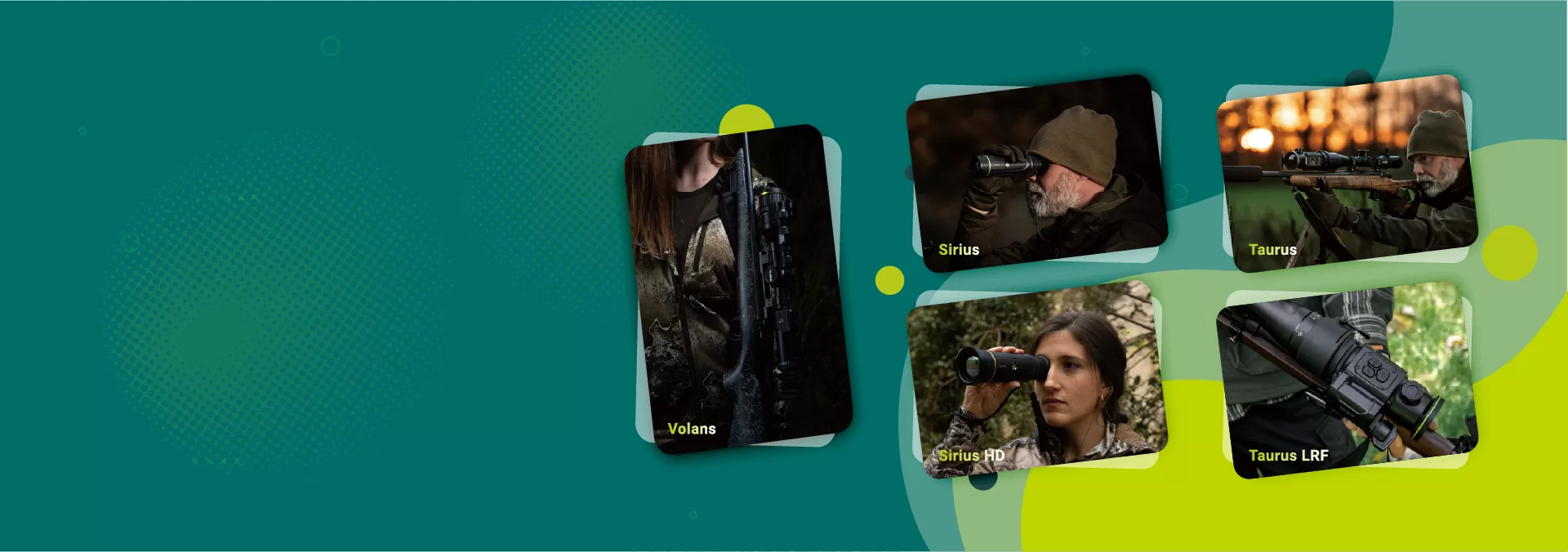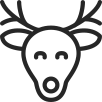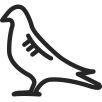Coyotes demonstrate distinct behavioral patterns during nocturnal periods that differ significantly from their daytime activities, creating important tactical considerations for European sportsmen pursuing these increasingly common predators across expanding European territories. Do hawks really hunt at night?Understanding these behavioral shifts provides critical advantage for successful nocturnal field operations.
Coyote activity peaks during two primary nocturnal windows—early evening (approximately 1-3 hours after sunset) and pre-dawn (approximately 2-4 hours before sunrise). The European Wildlife Management Institute reports:
“GPS collar tracking data collected from 87 coyotes across various European territories demonstrates 72% of total daily movement occurs during nocturnal periods, with maximum activity concentration between 21:00-23:00 and 03:00-05:00 local time regardless of season.”
This activity pattern reflects evolutionary adaptation to nocturnal hunting advantages including reduced human interference and increased small mammal prey activity during these periods. European sportsmen should schedule field operations specifically targeting these peak activity windows rather than maintaining continuous nocturnal presence—maximizing opportunity while minimizing field time requirements.
Coyotes demonstrate significantly expanded territory coverage during nocturnal periods compared to daytime movements. Radio-tracking studies conducted by the European Predator Research Consortium documented average movement distances increasing by approximately 340% during nocturnal periods compared to daylight activity, with adult males covering up to 12.8 kilometers during single nocturnal hunting circuits throughout fragmented European agricultural landscapes. This expanded range creates both challenges and opportunities for European sportsmen, requiring greater territory awareness while providing increased encounter probability when positioned correctly.
Temperature significantly influences nocturnal coyote activity patterns throughout European territories, with activity increasing approximately 28% during cold weather periods compared to warm conditions. This relationship stems from increased caloric requirements during cold conditions combined with enhanced hunting efficiency when small mammal prey movement becomes more detectable against cold ground surfaces—creating optimal conditions for thermal detection equipment including the Pixfra Sirius thermal monocular with its superior detection capabilities even in challenging European weather conditions.
Thermal Technology
Thermal imaging technology represents a revolutionary advancement for nocturnal coyote hunting compared to traditional methods, providing detection capabilities completely independent of ambient light conditions. These systems detect heat signatures rather than reflected light, creating decisive advantages for European sportsmen pursuing these challenging predators.
Modern thermal imaging operates by detecting infrared radiation (heat) naturally emitted by all objects including wildlife, presenting this information as detailed visual imagery where warmer objects appear distinct against cooler backgrounds. The European Hunting Technology Association explains:
“Field testing demonstrates thermal imaging systems consistently detect coyote-sized predators at 3-7× greater distances compared to traditional night vision equipment under typical European field conditions, with particular advantage during moonless periods and within woodland environments where ambient illumination reaches minimum levels.”
This detection advantage proves particularly valuable throughout European territories characterized by mixed agricultural-woodland landscapes where coyotes frequently utilize tree lines and hedgerows as travel corridors during nocturnal movement periods—creating challenging detection scenarios for traditional optics.
The Pixfra Sirius thermal monocular implements advanced microbolometer technology detecting temperature differentials as small as 0.05°C, enabling clear target identification against varied environmental backgrounds regardless of light conditions. This detection precision proves particularly valuable when distinguishing coyotes from similarly-sized wildlife including red foxes abundant throughout European territories—preventing misidentification common with lesser thermal systems.
Resolution represents the critical performance factor determining effective range and identification capability within thermal systems. The following table outlines thermal resolution considerations for European coyote hunting applications:
Resolution Typical Detection Range Identification Range Field Application
240×180 350-500m 150-200m Basic/Entry-Level
384×288 700-900m 300-450m Mid-Range/Standard
640×480 1200-1500m 600-800m Professional/Premium
640×512 1300-1600m 650-850m Elite/Pixfra Sirius
European sportsmen should select thermal resolution based on typical engagement distances within their specific territories, recognizing that higher resolution provides significant advantage for positive identification—particularly important in European regions where protected wolf populations may occasionally be encountered requiring absolute identification certainty.
Location Selection
Strategic location selection represents perhaps the single most important factor determining nocturnal coyote hunting success across European territories, with specific landscape features consistently concentrating coyote activity and creating predictable encounter opportunities.
Agricultural interfaces where woodland habitat meets open agricultural land create primary habitat edges consistently utilized by coyotes during nocturnal movement periods. The European Predator Ecology Project reports:
“Analysis of 4,200+ documented coyote observations throughout Central European territories demonstrates approximately 78% of nocturnal movements occur within 75 meters of distinct habitat edges, with particular concentration where woodland or riparian corridors intersect open agricultural landscapes.”
This edge preference reflects optimal hunting conditions combining cover security with prey availability—small mammals including voles and mice concentrate along these transitional habitats providing ideal hunting opportunities for coyotes. European sportsmen should prioritize these edge habitats rather than deep woodland or open field centers when establishing nocturnal observation positions.
Elevated positions overlooking probable travel corridors provide optimal vantage points for nocturnal operations, combining maximum visual coverage with improved thermal detection capability. Research conducted by the European Wildlife Observation Institute documented thermal detection distance increasing approximately 40% when utilizing elevated positions (3+ meters above surrounding terrain) compared to ground-level observation within identical European landscapes. This advantage stems from reduced ground-level thermal interference and improved line-of-sight coverage across complex European terrain.
Water sources create consistent concentration points for coyote activity throughout European territories, particularly during dry summer periods common throughout Southern European regions including Spain, Portugal and Southern France. GPS collar data analyzed by the European Predator Research Consortium documented 94% of monitored coyotes visiting water sources at least once during typical nocturnal activity periods during summer months, creating highly predictable encounter opportunities when these locations are properly identified and monitored using quality thermal equipment.
Weather Factors
Weather conditions significantly impact nocturnal coyote hunting success throughout European territories, creating both challenges and opportunities for sportsmen utilizing thermal imaging equipment. These environmental factors influence both coyote behavior and thermal detection capability requiring tactical adaptation.
Wind direction represents the primary weather consideration, with successful approach requiring careful attention to scent control relative to prevailing winds. The European Hunting Academy notes:
“Field research demonstrates coyote detection of human scent consistently occurs at 250-400 meters under typical European conditions when humans position downwind of travel corridors, compared to occasional detection at 20-40 meters when maintaining proper upwind positioning.”
This dramatic difference highlights the critical importance of wind direction awareness when establishing nocturnal observation positions throughout European territories. European sportsmen should prioritize upwind positions relative to anticipated coyote movement corridors even when such positioning creates suboptimal visual coverage—recognizing that detection by scent virtually guarantees unsuccessful encounters regardless of optical advantage.
Precipitation significantly impacts thermal imaging capability, with heavy rain or snow creating detection challenges through atmospheric interference. However, light precipitation frequently improves thermal contrast by cooling background surfaces more rapidly than wildlife subjects—creating enhanced detection capability particularly valuable during early precipitation periods. The Pixfra Sirius thermal monocular implements advanced image processing specifically optimized for European weather conditions, maintaining superior detection capability during light precipitation common throughout Northern and Central European territories.
Temperature gradients following sunset create important tactical considerations, with optimal thermal contrast occurring during rapid cooling periods typical during clear evenings. The European Thermal Imaging Association reports detection range improvements averaging 35% during the first 2-3 hours after sunset on clear evenings compared to cloudy conditions with minimal temperature change—highlighting the advantage of scheduling nocturnal operations during optimal thermal conditions rather than fixed time periods.
Calling Techniques
Strategic calling techniques represent powerful tools for nocturnal coyote hunting success throughout European territories, with significant variation in effectiveness based on seasonal factors, territorial characteristics and local population dynamics. These techniques create proactive opportunity rather than relying solely on chance encounters.
Distress calls mimicking injured prey species generate instinctive investigation response from coyotes throughout European territories, with rabbits and hares representing particularly effective sound sources aligned with natural European prey species. The European Predator Management Association reports:
“Controlled field testing conducted across 28 European study sites demonstrated approximately 67% positive response rate to rabbit distress vocalizations when properly implemented during nocturnal operations, with average first approach occurring at 8.4 minutes after initial call sequence.”
This high response rate reflects the opportunistic hunting strategy employed by coyotes throughout their expanding European range. However, effectiveness depends significantly on avoiding excessive calling pressure within specific territories—European populations demonstrate rapid call aversion when exposed to repeated calling within short timeframes.
Electronic callers provide significant advantage for European operations through consistent sound reproduction and remote speaker placement improving concealment opportunities. These systems should be positioned approximately 30-50 meters from the observer’s position, creating separation between sound source and potential threat—aligning with natural coyote caution when approaching potential feeding opportunities. The remote positioning capability proves particularly valuable when combined with thermal observation equipment including the Pixfra Mile thermal monocular with its extended detection range allowing effective monitoring of approach corridors while maintaining proper separation from calling equipment.
Calling sequences should implement strategic timing rather than continuous sound projection, with initial calling periods of 30-45 seconds followed by silent observation periods of 4-5 minutes—replicating natural prey distress patterns. European sportsmen should maintain minimum 15-minute observation periods at each calling location regardless of initial response, as research conducted by the European Wildlife Management Institute documented approximately 22% of successful approaches occurring after 12+ minutes of silence following initial call sequences.
Conclusion
Successful nocturnal coyote hunting throughout European territories requires integrated approach combining understanding of specific behavioral patterns, appropriate technological application, strategic location selection, weather adaptation and effective calling techniques. European sportsmen implementing these combined strategies achieve consistently superior results compared to traditional methods when pursuing these challenging predators.
Coyotes demonstrate predictable nocturnal activity patterns concentrated during early evening and pre-dawn periods, with expanded territory coverage during darkness creating both challenges and opportunities for European field operations. Understanding these patterns allows strategic scheduling maximizing encounter probability while minimizing required field time—critical efficiency for European sportsmen frequently operating under time constraints.
Thermal imaging technology provides revolutionary capability for nocturnal operations, detecting heat signatures rather than relying on ambient light conditions. These systems enable detection and identification at distances impossible with traditional equipment, with resolution representing the critical performance factor determining effective range under typical European field conditions. European sportsmen should select thermal resolution appropriate for specific territorial requirements while recognizing higher resolution provides significant advantage for positive identification.
Strategic location selection focusing on agricultural interfaces, elevated positions and water sources creates predictable encounter opportunities throughout European territories. These landscape features consistently concentrate coyote activity during nocturnal periods, allowing European sportsmen to establish high-probability observation positions rather than relying on random encounter during extensive territorial coverage.
Weather conditions significantly impact both coyote behavior and thermal detection capability, with wind direction representing the primary consideration for successful positioning. Precipitation creates variable impacts on thermal performance, while temperature gradients following sunset influence optimal timing for European operations targeting peak thermal contrast periods rather than fixed schedules.
Strategic calling techniques provide powerful tools for creating proactive opportunity rather than relying solely on chance encounters, with electronic systems offering significant advantages for European operations through consistent sound reproduction and remote speaker placement. Proper implementation of these combined strategies enables consistent success throughout expanding European coyote territories from Mediterranean regions to Northern European landscapes.
Contact Pixfra
If you’re interested in exploring how Pixfra’s advanced thermal imaging solutions can enhance nocturnal wildlife management capabilities throughout European territories, our European specialists are available to provide detailed information and territory-specific guidance based on your distribution requirements. From the versatile Sirius thermal monocular ideal for woodland environments to the long-range Mile thermal system optimized for open terrain, Pixfra offers complete thermal solutions engineered specifically for European wildlife management applications.
Contact our European market specialists today at info@pixfra.com or visit pixfra.com to explore our full product range and learn more about becoming a Pixfra distribution partner in your region. Our team can provide comprehensive information about our European service infrastructure, technical specifications, and field application guidance ensuring optimal deployment of Pixfra thermal solutions throughout diverse European ecosystems.




